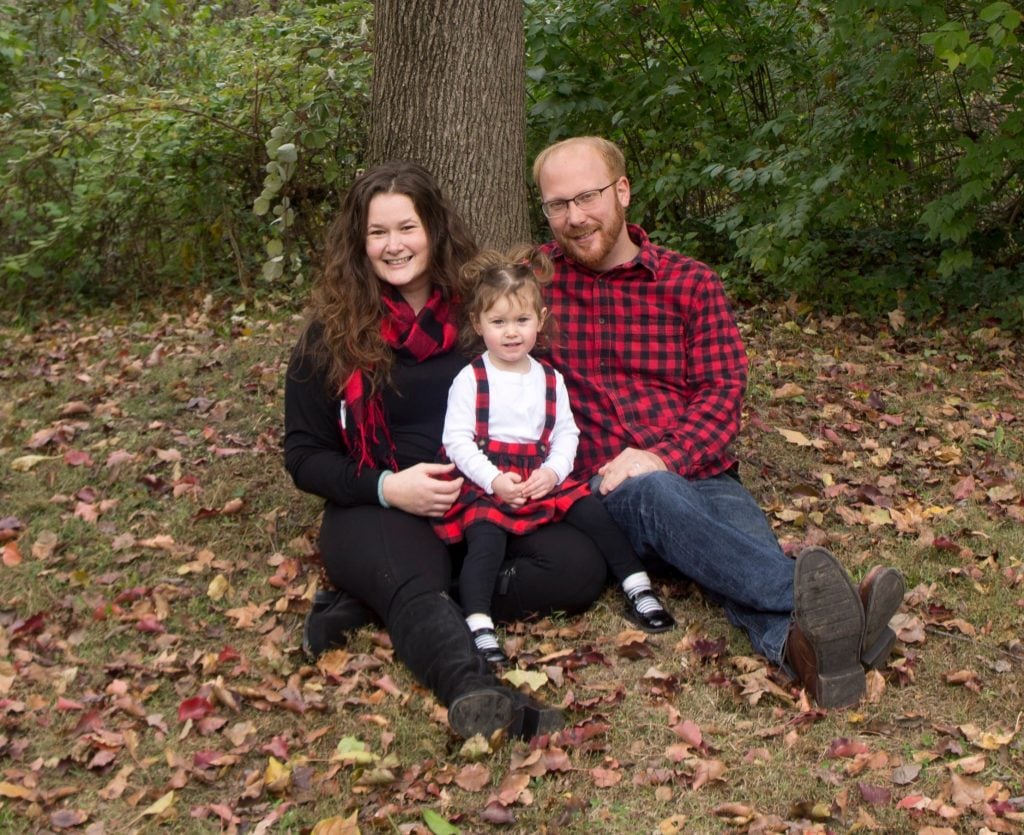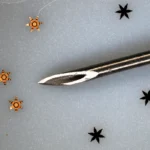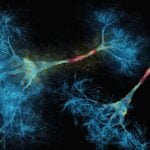Alumni Ever After

Some may say fate brought together INBT and Materials Science and Engineering Department’s (DMSE) alums Jesse Placone ’13 and Amanda Levy Placone ’16, but they’ll tell you it was the annual DMSE softball game. Levy Placone’s own parents met while attending Johns Hopkins as undergraduates in the early 1980s and in 2014, the tradition was passed on when Jesse and Amanda said “I do.” While working in different disciplines, the couple is still immersed in the field which brought them together (the science, not the softball field).
Mentored by Kalina Hristova, core faculty member at the INBT, Placone studied thermodynamics of receptor tyrosine kinases dimerization. Levy-Placone was mentored by Peter Searson, core faculty member and co-founder of the INBT and studied how to incorporate astrocytes into micorovessel platforms of the human blood-brain barrier. The INBT caught up with these alums to see how their careers have developed since graduating.
Levy Placone: I’m a senior consultant at Guidehouse working on projects for clients in the pharmaceutical and biotech industries. I started working in July 2019 and it’s been really interesting to work on a variety of projects across a range of therapeutic areas. I enjoy applying my scientific knowledge and problem-solving abilities while learning new knowledge in medical science and the life sciences industry.
Placone: I am an assistant professor at West Chester University in Pennsylvania. I develop 3D printed bone mimetics for assessing cancer metastasis, specifically assessing cell-cell and cell-substrate interactions. I am happy to help start their new Biomedical Engineering Program. I make decisions that impacts curriculum design and fosters undergraduate learning. Our new facilities are under construction and I’m helping design research and learning spaces to facilitate undergraduate engagement in research from the ground up.
Levy Placone: I had a great PhD experience working with Dr. Searson. At first, I was nervous about actually being expected to come up with ideas myself for experiments, as I felt that I wouldn’t know where to begin in proposing a relevant and impactful topic to investigate. There was a lot of trial and error involved, but I came out of that project much more confident in my ability to problem solve in the lab.
I got a lot of guidance from Dr. Searson, but was also given space to try things out on my own. Near the end of my PhD, Dr. Searson allowed me to propose my own research plan, which was extremely valuable to my development as a scientist.
Placone: I had a great experience working with Dr. Hristova. I was able to investigate how protein-protein interactions were modulated by specific point mutations through imaging techniques I helped establish. Not only was I able to work on this core project, but I was also able to collaborate with William Wimley at Tulane University to work on antimicrobial peptides.
Working with Kalina on establishing new methods for our research positioned me well for my transition to a different research area. My expertise in understanding/interrogating signaling cascades has proven beneficial time and time again throughout my research career.
Levy Placone: I was a postdoc for almost three years in a collaborative industry/academia lab at GlaxoSmithKline’s Center for Translational Neuroscience at Sanford Burnham Prebys Medical Discover Institute in San Diego. We were investigating circulating factors in neurodegeneration, and as the first member of the lab, I was tasked with setting up a lab from scratch and help develop the research plan. After the initial setup period, I mostly researched the effects of a potential therapeutic for microglia inflammatory response.
While there I realized that I enjoyed setting up the lab when I was able to review the literature and help propose a research plan, but the bench work was far less interesting. I decided life science consulting would be a good fit for my skills and interests where I could be involved in the science without doing lab work.
Placone: After I left JHU, I knew that I wanted to become a faculty member working on cancer and the bone microenvironment. However, I knew that I needed to differentiate myself from my previous work. I pivoted for my first post-doctoral position to learn more about 3D printing.
I leveraged my materials science background to develop new materials for 3D printing applications. In John Fisher’s group at the University of Maryland, I led and advised graduate students on several projects ranging from skin and vascular grafts to bone and placenta mimetics. During this time, I was awarded and F32 Training Grant from the NIH to investigate the interaction of induced pluripotent stem cell-derived endothelial cells with micropatterned substrates to aid in the development of vascular grafts.
To strengthen my expertise in stem cell work, I then moved to Adam Engler’s group at the University of California, San Diego. There I continued my work on endothelial cells derived from iPSCs, and supplemented it with work on mechanotransduction in cancer biology.
Levy Placone: The INBT collaborative nature helped me to understand fields outside of my own. Collaborating with other engineers, biologists, and clinicians showed me the broader picture much better than if I had only interacted with people in my field. Learning more about these fields, and how to communicate with a range of individuals and scientific backgrounds, has been extremely valuable to my career.
Placone: The INBT provided training that was helpful in disseminating knowledge to those outside of my research niche. The ability to effectively communicate with interdisciplinary teams has proven beneficial when working with clinicians in my postdoc positions.
Levy Placone: I remember hearing someone say that the most important thing in a PhD was learning how to think. Learning how to ask the right questions and draw connections between seemingly disparate elements has proved invaluable in my career since my PhD training. I’ve since repeated this bit of wisdom to anyone who asks about getting a PhD.
Students should also learn to advocate for themselves and their research. If you’ve been working on a project for four years, no one knows the ins and outs of your project better than you. If you’re asked to do something that doesn’t seem feasible or doesn’t make sense, speak up, and give a well-reasoned argument as to why that may not be the best approach.
As much as a PhD prepares you to do research, it’s also important to understand how you can apply the soft skills you learned in your PhD, like problem solving, collaboration, and scientific writing/presenting to other potential career paths.
Placone: Foster collaborations between research groups where there is overlap with your PhD. Bringing in external knowledge will greatly aid in overcoming challenges you experience throughout your academic experience. The insight of others trained in different fields can help shift your perspective and overcome old problems in new ways.
Photo caption: Amanda Levy Placone (left) and Jesse Placone (right) with their daughter Kyla (center).
*An abridged version of this story appears in the 2019 Nano-Bio Report.
Latest Posts
-
 Johns Hopkins Postdoc Named in Forbes `30 Under 30′ List
December 8, 2025
Johns Hopkins Postdoc Named in Forbes `30 Under 30′ List
December 8, 2025
-
 Micro Grippers: David Gracias Builds Micromachines That Fold, Stick, Swim, and Sense—All Inside the Human Body.
November 20, 2025
Micro Grippers: David Gracias Builds Micromachines That Fold, Stick, Swim, and Sense—All Inside the Human Body.
November 20, 2025
-
 A bold new approach to autoimmune diseases
November 19, 2025
A bold new approach to autoimmune diseases
November 19, 2025


